#roxochampsa
Text
Prehistoric Planet Croc Ideas
So this was a thing I did on Twitter in anticipation of Prehistoric Planet. Obviously crocs (in this case meaning crocodylomorphs) were a pretty massive part of earth's fauna during the late Cretaceous, and seeing as the first season featured NONE I came to speculate which taxa could hypothetically make an appearance.
Now part of the challenge for myself was to come up with a new, interesting contender every day in anticipation of the show's release, each based around the confirmed episides we had and restricted purely to taxa from the Campanian and Maastrichtian. While it took a lot of energy, I did manage to do so. Hell, halfway through they dropped the reveal of Simosuchus, which I had saved for later.
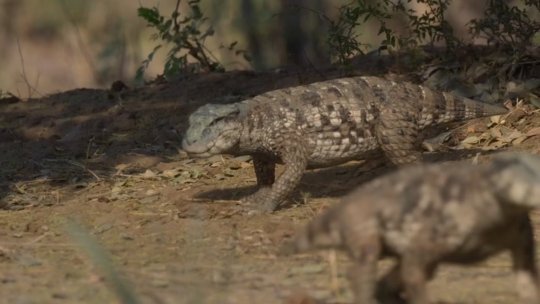
Obviously we didn't get much still, but I'll regardless post my list of candidates and ideas here, perhaps third time's the charme for a lot of these (tho for convenience I'm still ordering them by S2s episode titles). I'll also try to break them apart roughly by biome, starting with islands.
PS: I'd love to hear which crocs people would have loved to see themselves. Any on this list or stuff I didn't even mention? Let me know I'm curious.

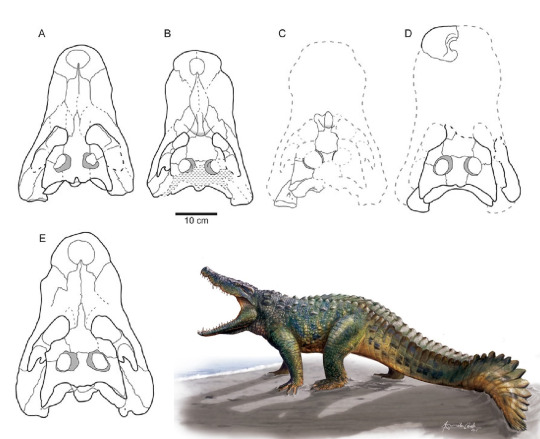

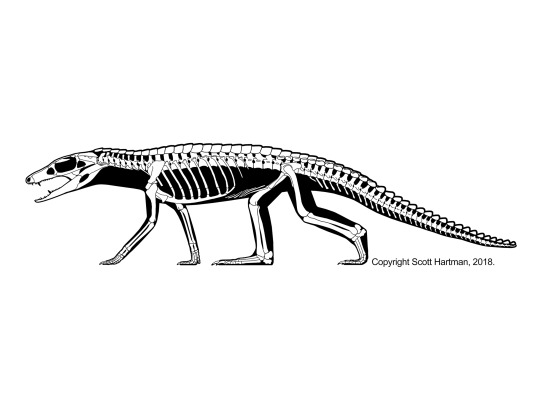

We got a shit ton of island crocs from the Cretaceous actually, which you can broadly divide into two categories.
The crocodiles of the European archipelago as seen in the top row.
Featuring the small, possibly shellfish eating Acynodon (art by Adramelech89), the incredibly widespread Allodaposuchus which did have some possibly semi-terrestrial forms (art by Alejandro Blanco, Aina and Agnès Amblás) and Aprosuchus, a tiny terrestrial critter from Hateg (art by @knuppitalism-with-ue). They already give a nice diversity between tiny durophages with blunt snouts, large, more traditional crocs and lanky land species.
The other island category concerns Madagascar, which had a lot of attention in season 2. Discounting Simosuchus, we got Araripesuchus tsangatsangana (art by Scott Hartman) and Mahajangasuchus (art by Mark Hallet). Both are really cool. The former is yet another smaller terrestrial species that may not actually be part of Araripesuchus, while the later is a massive, 4 meter relative of the famous Kaprosuchus that took to the water independently from all other crocs and has been nicknamed "Hippo croc" for its weird skull. Really I'd have loved to seen an episode entirely dedicated to this place.
Next up we had the badlands episode, which oh boy has a lot of contenders from the clade Notosuchia. Brace yourself.
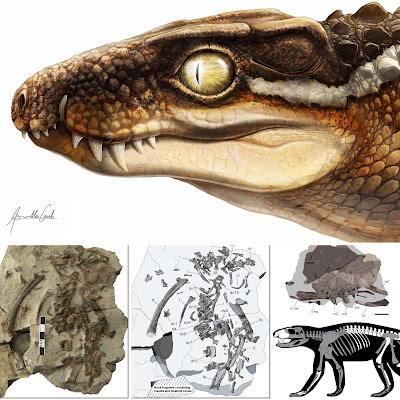


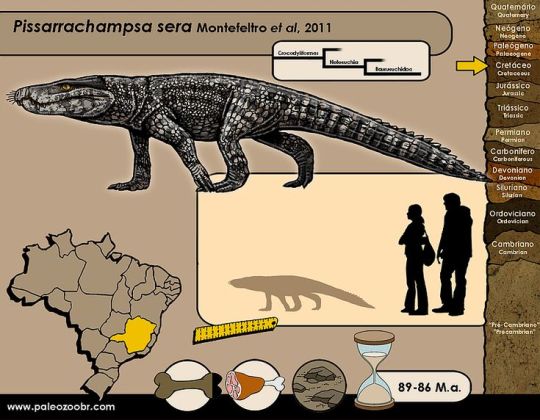


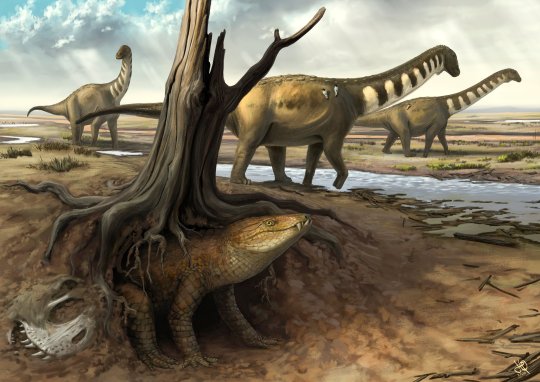

Here again I could split these in two categories.
The first is just general badland taxa. There's Ogresuchus for example, from Spain's Tremp Formation (art by Aina and Agnès Amblás). A relatively small sebecid found in a sauropod nesting site. And we all know what PhP does with baby sauropods. Or the long-necked Gobiosuchus (art by @yoofilos) from Mongolia, which may look like its related to the other ones in this category but actually is a far more ancient type of croc.
The far bigger group concerns South America's Notosuchians. ALL OF THESE are from the Bauru Group, with some even from the same single formation. You got Stratiotosuchus (again by Joschua Knüppe), a large terrestrial baurusuchid that filled the nische of mid sized carnivore in an environment shared by sauropods and abelisaurs. There's Pissarrachampsa (by Felipe Alves Elias), another baurusuchid I decided to feature because we have evidence of a nesting site that shows they only had few eggs. A great opportunity to show their tender side. Uberabasuchus (justin_an74), part of the bizzarly proportioned peirosaurids. Adamantinasuchus (by Deverson da Silva), a small, lanky Notosuchian and of course the heavily armored omnivore Armadillosuchus (by the ever talented Júlia d'Oliveira). Hell you could do a full episode just on the foodweb of the Bauru Group (Godoy et al. 2014).
Then there's swamps, which I'll just use to dump all the crocs that don't fit into the other categories.
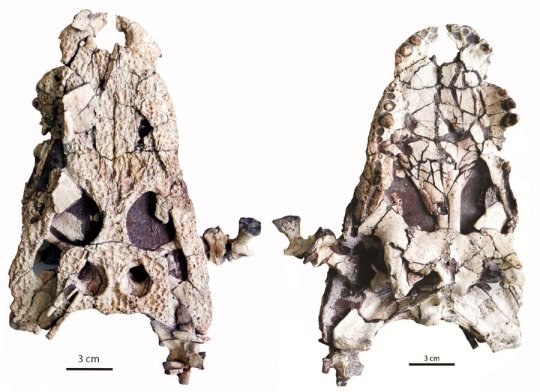


As you'd expect, freshwater would be ideal for crocs with a more traditional semi-aquatic lifestyle, here represented by three forms. Jiangxisuchus (image by Li et al. 2014) is a paralligatorid, which are tiny crocodilians from the Cretaceous and Paleogene of east Asia. We honestly don't know what they are, some say alligator relatives, others say they are closer to crocs. But its small and cute. Then there's Roxochampsa (artist of the model I couldn't find), which looks suspiciously crocodilian but is actually a relative of Uberabasuchus from the badlands, hell it appeared in the same formation. Still, I reasoned that I'd throw it into this category because I already proposed so much for badlands (none of which came true but hey). And then there's Denazinosuchus (art by Andrey Atuchin). Again it looks deceptively like a modern croc, but is actually the last remnant of the goniopholids, crocodyliforms that were prominent animals in the Jurassic and early Cretaceous. It could have brought both taxonomic diversity nad highlighted croc resilience till the end.
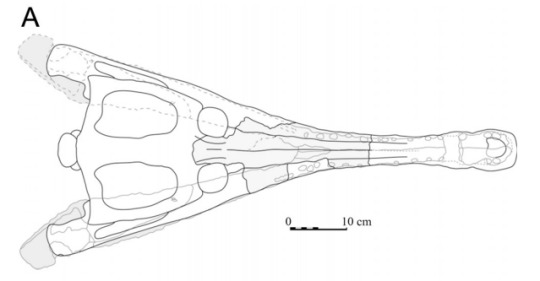

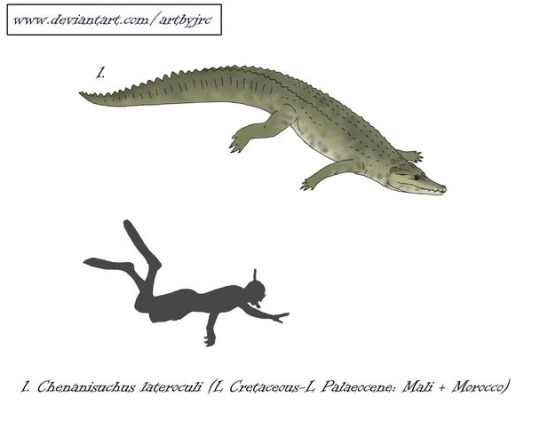
When it came to picking out crocs for Oceans, it got tricky. Obviously season 2 tried to differentiate itself by being set more in the open ocean, not the coast, and true pelagic crocodiles weren't around by the end of the Cretaceous. So I had to settle for coastal animals. There's Sabinosuchus (Schiller II et al. 2016), a cousin to Sarcosuchus and, like Denazinosuchus, one of the last of its lineage. Also its from Mexico which is rarely talked about for its fossils. Rhabdognathus (Ghedoghedo) is a distant cousin, a slender snouted dyrosaur. Unlike pholidosaurs, dyrosaurs actually did really well after the KPG impact and spread around a lot, living way into the Eocene. And finally Chenanisuchus (art by artbyjrc), which like Rhabdognathus was found both before and after the impact that killed the dinosaurs.

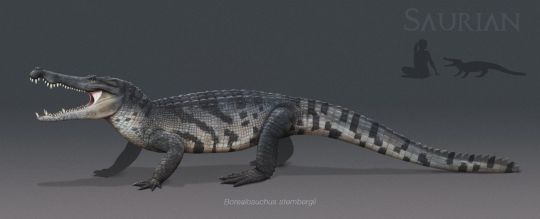
And the final two I shall talk about, both of which I thought/hoped would appear in the North America episode. Again, there's certainly overlap, both would have just as much fit into swamps, while many others would have also suited North America. Regardless, here's Brachychampsa (Tom Parker) and Borealosuchus (Chris Masna), both iconic animals from the Hell Creek Formation. One closely allied with alligators and caimans, the other more basal with a head-shape more similar to todays crocodiles.
Now obviously there'd have been a lot more. Part of the challenge to myself was to try and be as diverse as possible, rather than just listing 10 different baurusuchids I went with only two, tried to include as much of the world as possible, etc.... There's also the fact that some really awesome taxa, Titanochampsa, Brachiosuchus and Eurycephalosuchus, all incredibly unique or interesting, were published too late to have been considered for the show.
And now, in hinsight, we obviously know that with the exception of Simosuchus none of them made it in. Which is a shame, but maybe next time.
#prehistory#palaeblr#crocodile#paleontology#long post#prehistoric planet#prehistoric planet 2#borealosuchus#brachychampsa#simosuchus#pissarrachampsa#stratiotosuchus#gobiosuchus#ogresuchus#uberabasuchus#roxochampsa#armadillosuchus#adamantinasuchus#jiangxisuchus#denazinosuchus#sabinosuchus#rhabdognathus#chenanisuchus#mahajangasuchus#araripesuchus#acynodon#allodaposuchus#aprosuchus
157 notes
·
View notes